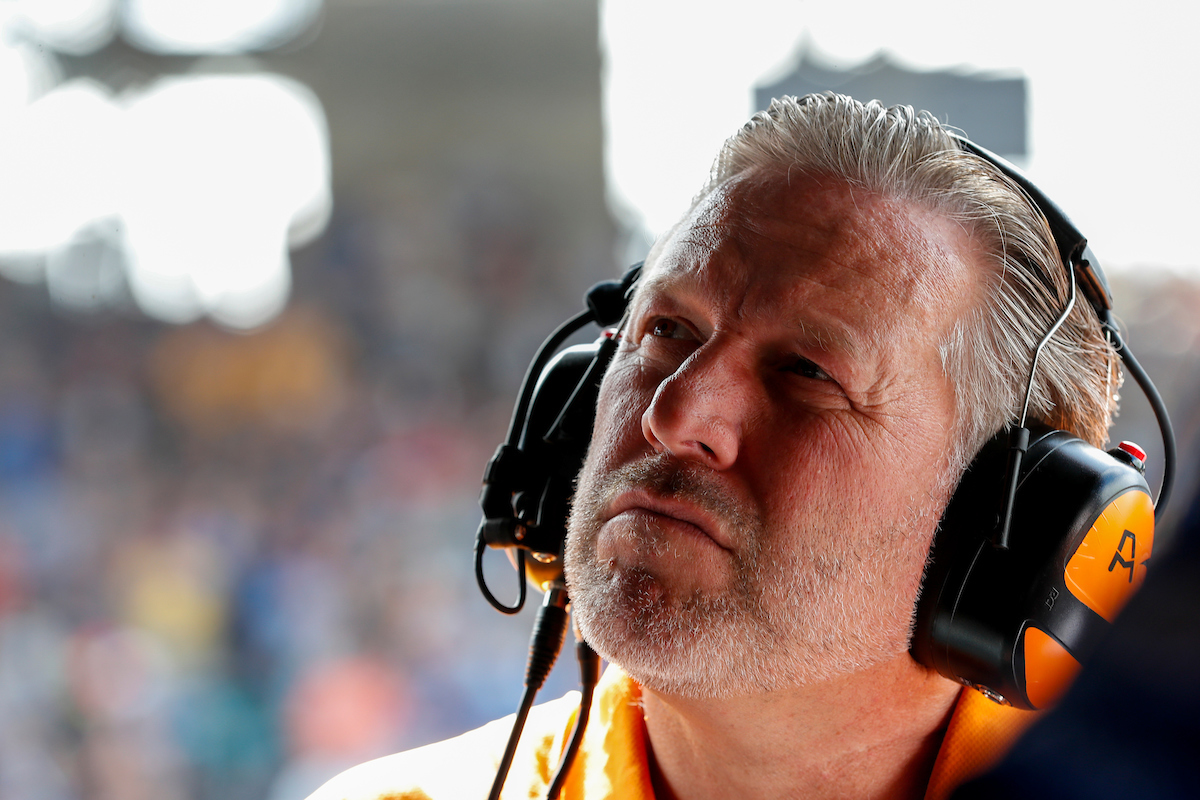McLaren Racing CEO Zak Brown arrived at the circuit Saturday morning and got his first look at the NTT IndyCar Series’ new hybrid powertrains in action during practice and qualifying for the Ontario Honda Dealers Indy Toronto event.
With years of experience leading the hybrid-powered McLaren Formula 1 team, Brown offered a fresh take on the unique energy recovery systems carried in the bellhousings that add power, weight, and newfound relevance to IndyCar’s chassis and engine formula as it competes in its 13th season.
“Given everyone’s concerns, I’m pleasantly surprised,” Brown told RACER. “I am a big advocate of updating our technology, chassis, engines, etc., and you go talk to any manufacturer, and they are very bullish on hybrids. I would even say, from my visit last month to the 24 Hours of Le Mans (where nine manufacturers compete with hybrids), that they’re more bullish on hybrid than electric.
“In our quest to make sure that we modernize IndyCar’s technology, that includes the chassis and a hybrid power unit. I think one could argue it was long overdue and I’m thankful it’s here. [I’m] pleased that there’s been very few technical issues now that it’s gotten started.”
In the two weeks since IndyCar brought its hybrids forward to race at Mid-Ohio, complaints about the on-track product, namely in reduced passing, have been shared by some fans and members of the paddock. While entirely valid, despite the Iowa doubleheader’s processional races being mostly due to a mismatch in track surface grip and tire degradation, Brown says the purpose for hybridization was never driven by entertainment.
[lawrence-auto-related count=3 category=1408]
“I don’t think the hybrid has changed the racing for good or bad, but what it has done is made the technology that we’re using more relevant, more appealing to manufacturers,” he added. “I’m not sure it was ever intended to make the racing better or worse. It was intended to modernize the marketing message and be current in today’s more sustainable world.”
Sunday’s 85-lap contest will deliver more data on how the hybrid-spec IndyCar formula performs in yet another change of venue.
Its first street race will demand nimble handling on the low-grip city circuit, and as Brown looks to the future, his long-held desire for the Dallara DW12—in use since 2012—to be replaced by something new could come true as soon as 2027 when its successor will be designed from scratch as a hybrid.
“The fact that the cars are heavier now, that points to needing more modern race cars to take weight out,” he said. “Hybrid Formula 1 cars have gotten heavier and heavier and heavier and heavier. I think Formula 1 cars, people generally think are too big and too heavy, and that’s something that’s being addressed in the ‘26 rules.
“Yes, hybrids are heavier, but that’s why we’re working on a new chassis, and part of the brief will be to make the racing better, make the cars even safer, and make them lighter. That’s why we need a new IndyCar chassis, and they say a new chassis is coming.”
